中国组织工程研究 ›› 2013, Vol. 17 ›› Issue (11): 2048-2053.doi: 10.3969/j.issn.2095-4344.2013.11.022
• 组织构建基础实验 basic experiments in tissue construction • 上一篇 下一篇
川芎嗪干预钝性肺挫伤急性期大鼠肺组织细胞的凋亡
曹 晨1,邓应忠1,郑明安1,刘 芳1,孟庆涛2
- 1武汉市第三医院光谷关山院区,湖北省武汉市 430074
2武汉大学人民医院麻醉科,湖北省武汉市 430060
Ligustrazine prevents lung cell apoptosis in the acute stage of pulmonary contusion induced by blunt chest trauma
Cao Chen1, Deng Ying-zhong1, Zheng Ming-an1, Liu Fang1, Meng Qing-tao2
- 1 Guanggu Guanshan Branch, Third Hospital of Wuhan City, Wuhan 430074, Hubei Province, China
2 Department of Anesthesia, Renmin Hospital of Wuhan University, Wuhan 430060, Hubei Province, China
摘要:
背景:急性胸部撞击后所致的肺挫伤(钝性肺挫伤)常引起呼吸功能异常和继发性炎性反应,并参与全身炎性反应综合征和多器官功能障碍综合征,其发病原因及致病机制亟待明确。 目的:观察胸部撞击所致钝性肺挫伤急性期细胞凋亡的变化及其川芎嗪对其的影响。 方法:健康雄性SD大鼠随机分为正常对照组、模型组、川芎嗪治疗组,后两组制备胸部撞击伤模型,川芎嗪治疗组建模后立即腹腔注射川芎嗪80 mg/kg 1次。在创伤发生后1,2,3 h观察肺组织病理形态学及细胞凋亡的改变、检测肺水肿程度和肺血管通透性改变,免疫组织化学检测肺组织Bcl-2、Bax和Caspase-3的表达及血液中肿瘤坏死因子α水平变化。 结果与结论:模型组肿瘤坏死因子α水平在创伤后1 h即显著增加,创伤后2 h及3 h间急剧增加(P < 0.05);创伤后2 h及3 h肺组织细胞凋亡指数及肺组织损伤程度显著增高(均P < 0.05);肺血管通透性及肺水肿程度增加(P < 0.05);Caspase-3表达显著增高(P < 0.05),Bcl-2/Bax比值显著降低(P < 0.05)。川芎嗪治疗组在相应时间点相对于模型组肿瘤坏死因子α水平显著降低(P < 0.05),肺组织内细胞凋亡指数及肺组织损伤程度降低(P < 0.05),肺血管通透性及肺水肿程度减轻(P < 0.05);Caspase-3表达下降(P < 0.05),Bcl-2/Bax比值增加(P < 0.01)。结果提示,川芎嗪可通过抑制肿瘤坏死因子α表达,下调Caspase-3的表达并提高Bcl-2/Bax的比值,以降低胸部撞击所致肺组织急性期的异常凋亡并减轻胸部撞击所致急性期肺挫伤。
中图分类号:
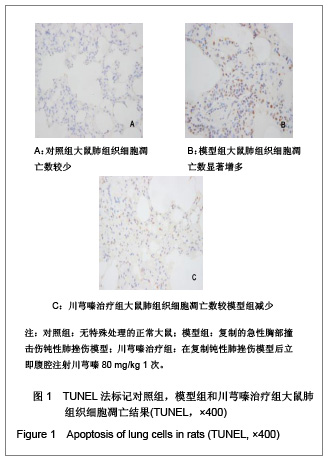
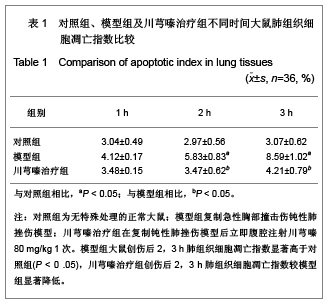
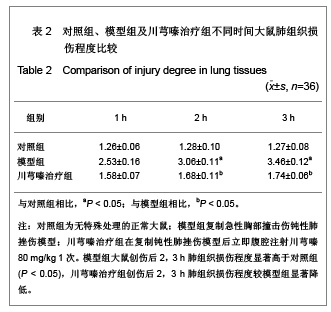
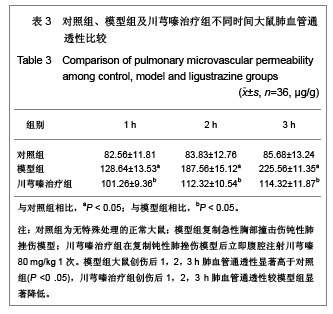
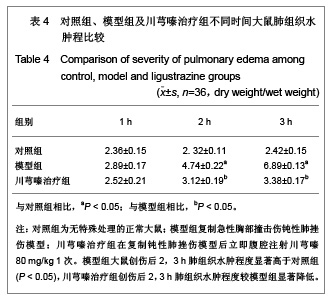
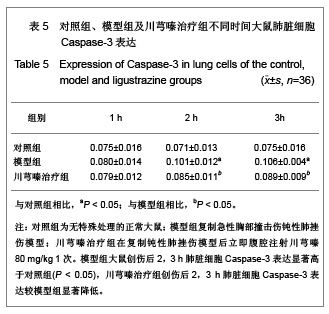
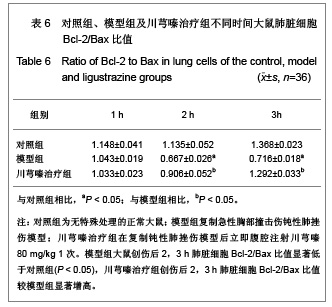
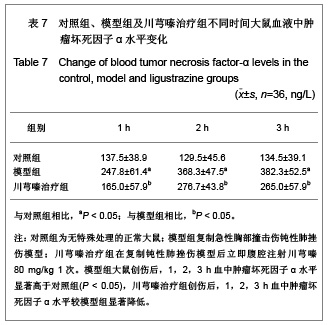
.jpg)
.jpg)